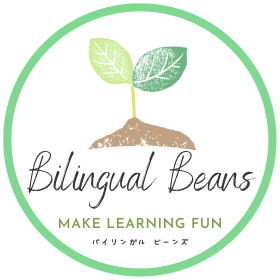What’s recasting?
Recasting is a great, effective way of promoting language learning. Recasting is the technique used to indirectly correct a learner’s language by restating (repeating) or rephrasing their incorrect speech in the correct form, without explicitly identifying errors. This technique is widely used and supported by teachers and language specialists because it helps enhance the learner’s language input and intake processes in a safe environment while lowering their “affective filters,” which include emotional states such as anxiety or stress.
The example video on Home Page under “Converse while Recasting” shows how a child processes input and intake of the new vocabulary Mangetsu (full moon) using the bilingual wall art.
Examples of Recasting
- A child: “The boy ran. She fast.”
- Recast: “Oh, he was fast? That’s great!”
- A child: “Ashi ball ochite de itai (Legs ball fell and painful).
- Recast: “Ball ga ashini ochite itai (The ball fell on the foot and it’s painful)?”
- A child: “un, sou (yeah, right).”
- A child: “It’s a full moon!” (when seeing a half-moon)
- Recast: “a full moon?” and wait for a child’s response or self-correction.
The recast provides the correct structure, allowing the learner to hear the proper form and internalize it without disrupting the flow of the conversation. This element of recasting is very different from corrective feedback, which involves explicit corrections of the learner’s speech.
The following video shows how I recasted while code switching (changing to another language).
